What was the issue?
Unintended streak marks were found on jeans after washing at the brand’s garment factory in Bangladesh, causing a quality issue with the delivery of this order of 1.1 million pieces.
Upon a rough examination, 10% to 15% of the checked jeans were found to have such streak marks. If the goods had reached the market, one could anticipate a potentially high return rate from consumers dissatisfied with the jeans they purchased.
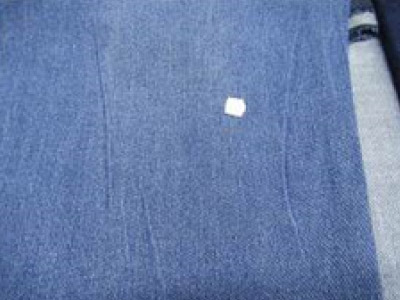
Caption: Photos of unintended streaks on jeans.

Caption: Photos of unintended streaks on jeans.
Why did the issue happen?
Our QA experts carried out a root-cause analysis to uncover three underlying causes after the troubleshooting visit:
Washing recipe was not followed properly
Different temperatures ranging from 45°C to 60°C were required during various stages of the wet processing, as specified in the washing recipe. However, the instructions were not followed properly, resulting in the water temperatures being set too high for this fabric, which caused shrinking and left creases and streaks on the jeans. In some instances, for example, the temperature was set between 50°C and 60°C, while the correct temperature should have been 45°C.
Poor housekeeping during washing process
"For optimal results, a maximum of 130 pieces of jeans should be processed at once; however, more than 140 pieces were processed together by workers. Additionally, washed jeans were left unattended for prolonged periods. After washing, the goods were left idle for 6 to 8 hours before being sent to the next processing step. The storage space was poorly organized, as no shelves or baskets were used to store washed jeans in small batches, which could have prevented excessive pressure on the jeans at the bottom. Furthermore, a FIFO (first-in-first-out) arrangement, along with clear documentation and labeling, was lacking, which hindered the timely and effective processing of washed jeans. The failures in the washing operations have led to the formation of permanent creases and streaks, as the jeans were dried under improper conditions."
Improper/ Inadequate in-house QC
The washing quality control (QC) and garment QC at the factory were not carried out effectively. As a result, some defective goods were approved, which ultimately raised a quality alarm on the customer’s side.
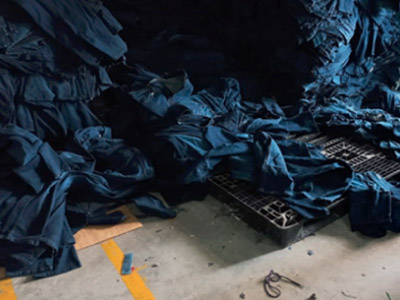
Caption: photos of jeans under poor housekeeping.
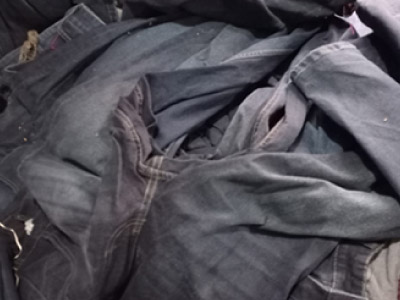
Caption: photos of jeans under poor housekeeping.
How did we fix it?
Targeting the four problems identified, our QA-QC Team has made below suggestions which improved the situation significantly.
Solution for wrong washing recipe and poor washing housekeeping
The washing recipe and process have been adjusted. Temperatures have been set to the correct degrees as specified in the washing recipe. Workers received new instructions on how to handle the jeans properly both before and after washing to prevent the formation of streaks. Training was provided to ensure that the new process is followed correctly by all workers.
key point: dry the jeans for 5 minutes from previous step before washing
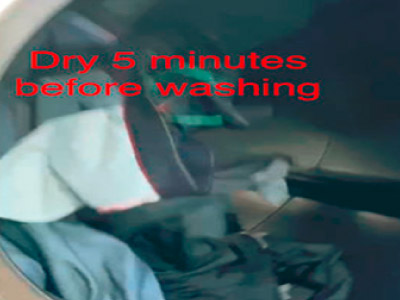
Key point: dry the jeans for 5 minutes from previous step before washing.
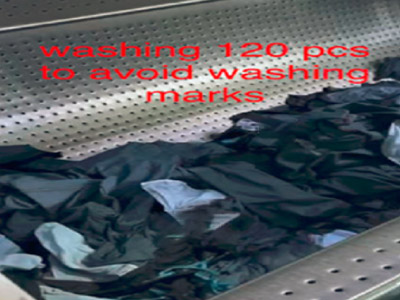
Key point: wash 120 pieces maximum each time.
Solution for improper in-house QC
In-house QC checks and reports were monitored to ensure quality checks were first done properly at factory. Capability building was a key part to improve from root so in-house QC training was done around incoming materials control after washing with controller SOP updated. A clearer policy on defect sorting was reinforced also so rejected pieces are cleared from stocks promptly.
As a third-party player that commits to bring assurance to our customers, Eurofins’ teams made daily visits to the factory to verify in-house QC performance against Corrective Action Plan (CAP) log. Random visits were made also to the washing section to pay extra attention to the problematic areas.
What were the results?
Thanks to the efforts of all parties involved, the failure rate has been significantly reduced from the initial 10% to 15% to less than 1% for in-process items and 0.5% for bulk items, respectively.
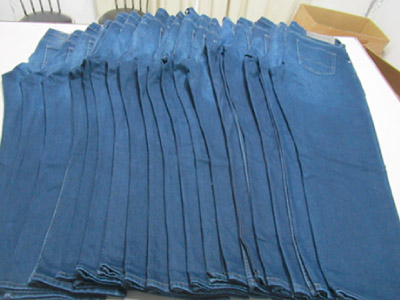
What were the results?
With the effort spent of all parties, the failure rate has been greatly reduced from 10% - 15% as mentioned in the beginning, to less than 1% and 0.5% for in process and in bulk respectively.
Needing a hand in your garment and textile production? Check out how our QA-QC Programme for Apparel and Garment Industry can help!
